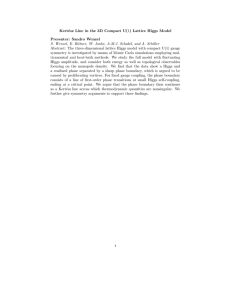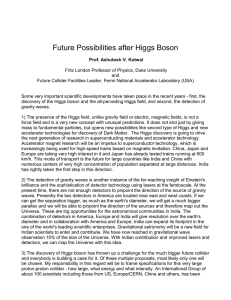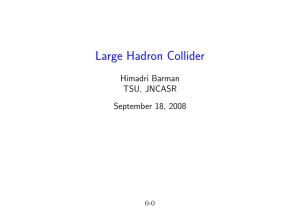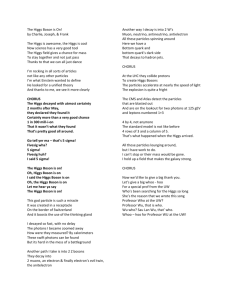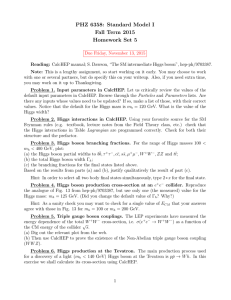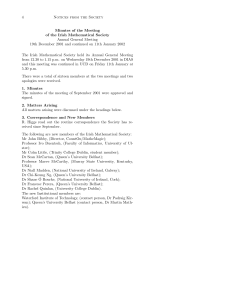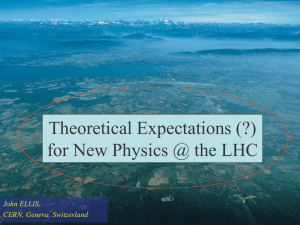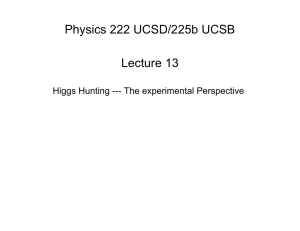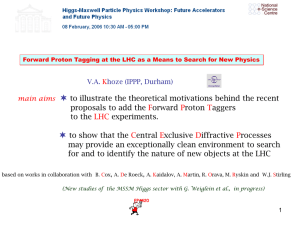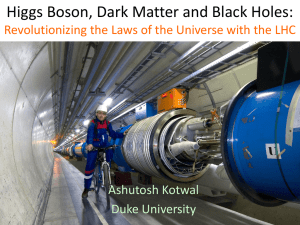PiTP: Introduction to Collider Physics Practicum on Simulations Assignment 7
advertisement
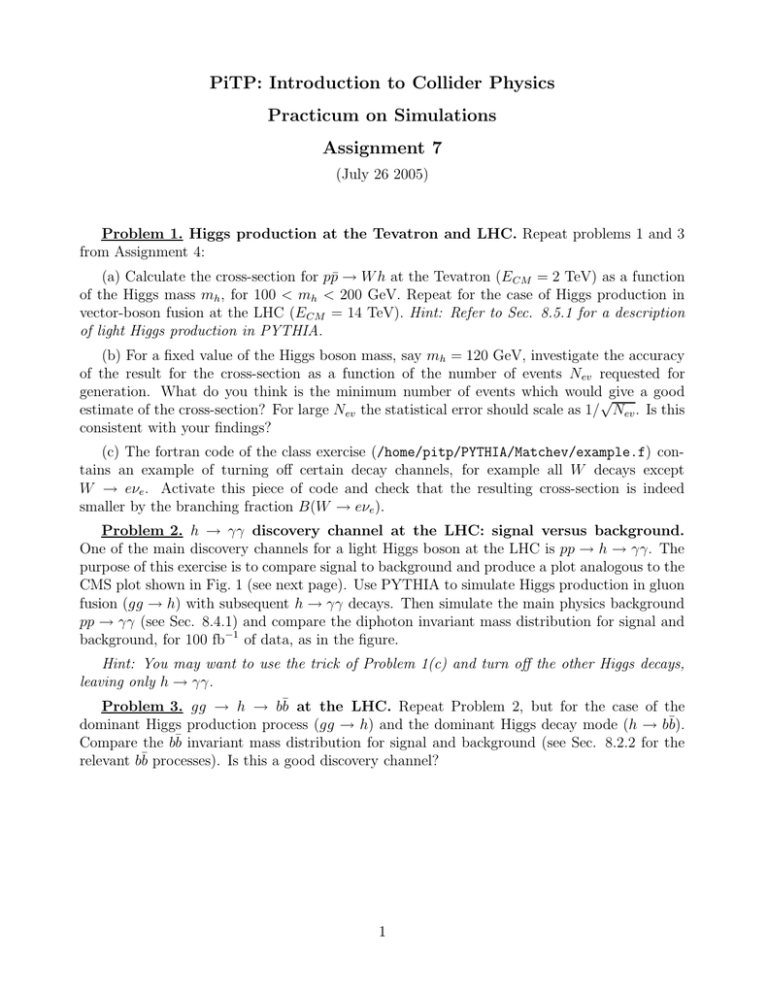
PiTP: Introduction to Collider Physics Practicum on Simulations Assignment 7 (July 26 2005) Problem 1. Higgs production at the Tevatron and LHC. Repeat problems 1 and 3 from Assignment 4: (a) Calculate the cross-section for pp̄ → W h at the Tevatron (ECM = 2 TeV) as a function of the Higgs mass mh , for 100 < mh < 200 GeV. Repeat for the case of Higgs production in vector-boson fusion at the LHC (ECM = 14 TeV). Hint: Refer to Sec. 8.5.1 for a description of light Higgs production in PYTHIA. (b) For a fixed value of the Higgs boson mass, say mh = 120 GeV, investigate the accuracy of the result for the cross-section as a function of the number of events Nev requested for generation. What do you think is the minimum number of events which would√give a good estimate of the cross-section? For large Nev the statistical error should scale as 1/ Nev . Is this consistent with your findings? (c) The fortran code of the class exercise (/home/pitp/PYTHIA/Matchev/example.f) contains an example of turning off certain decay channels, for example all W decays except W → eνe . Activate this piece of code and check that the resulting cross-section is indeed smaller by the branching fraction B(W → eνe ). Problem 2. h → γγ discovery channel at the LHC: signal versus background. One of the main discovery channels for a light Higgs boson at the LHC is pp → h → γγ. The purpose of this exercise is to compare signal to background and produce a plot analogous to the CMS plot shown in Fig. 1 (see next page). Use PYTHIA to simulate Higgs production in gluon fusion (gg → h) with subsequent h → γγ decays. Then simulate the main physics background pp → γγ (see Sec. 8.4.1) and compare the diphoton invariant mass distribution for signal and background, for 100 fb−1 of data, as in the figure. Hint: You may want to use the trick of Problem 1(c) and turn off the other Higgs decays, leaving only h → γγ. Problem 3. gg → h → bb̄ at the LHC. Repeat Problem 2, but for the case of the dominant Higgs production process (gg → h) and the dominant Higgs decay mode (h → bb̄). Compare the bb̄ invariant mass distribution for signal and background (see Sec. 8.2.2 for the relevant bb̄ processes). Is this a good discovery channel? 1 Figure 1: CMS simulation of h → γγ (from hep-ph/0405026). 2
